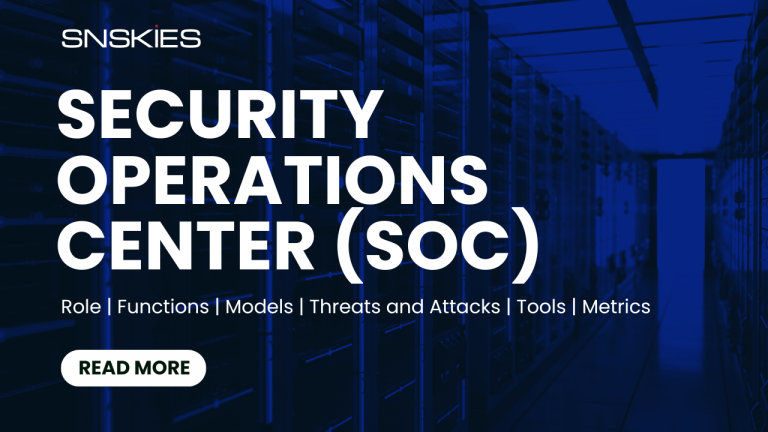Understanding the Security Operations Center (SOC)
Understanding the Security Operations Center (SOC)
- Articles
- December 12, 2024

A Security Operations Center (SOC) serves as the core of an organization’s cybersecurity defenses. It is where cybersecurity experts monitor, detect, analyze, and respond to cyber threats in real-time, ensuring the safety of sensitive data and critical infrastructure.
What Does a SOC Analyst Do?
SOC analysts are the first line of defense against cyber threats, handling a variety of essential tasks, including:
- Monitoring: Continuously reviewing network traffic, logs, and alerts to detect potential threats.
- Detection: Configuring alerts for anomalies such as unauthorized access or unusual data flows.
- Analysis: Investigating alerts to distinguish genuine threats from false positives.
- Response: Acting quickly to block malicious IPs or isolate compromised systems.
Key Functions of a Security Operations Center
Real-Time Monitoring and Detection
SOCs keep a constant watch on networks and systems to spot suspicious activities. Alerts are triggered for immediate threat identification.Threat Intelligence
By gathering and analyzing data on emerging threats, SOCs stay ahead of potential attacks and refine defense strategies.Incident Response
Rapid containment, mitigation, and recovery minimize the impact of security breaches.Proactive Threat Hunting
SOCs proactively search for undetected threats, reducing the likelihood of advanced cyberattacks.Forensic Analysis
Detailed investigations into past incidents help uncover attack methods and enhance future defenses.Security Awareness Training
Educating employees on cybersecurity best practices reduces risks linked to human error.
The Evolution of the SOC
The modern SOC has progressed through four distinct stages:
- Availability Monitoring: Ensures key systems remain operational.
- Reactive Monitoring: Identifies and addresses threats post-incident.
- Proactive Monitoring: Uses advanced analytics to anticipate vulnerabilities.
- Proactive Automation: Employs AI and automation to enhance detection and response.
SOC Models Explained
- Internal SOC: Fully managed in-house, offering greater control but requiring significant resources.
- Managed SOC: Outsourced to a Managed Security Service Provider (MSSP), providing cost efficiency but raising potential data privacy concerns.
- Hybrid SOC: Combines internal and external capabilities for a balanced approach to cost and control.
Common Cyber Threats Addressed by SOCs
- Malware: Ransomware, spyware, and trojans that compromise systems.
- Phishing: Deceptive schemes aimed at stealing sensitive information.
- DDoS Attacks: Overloading systems to cause service outages.
Notable Attack Types
- SQL Injection: Exploits vulnerabilities to manipulate databases and steal data.
- Brute Force Attacks: Repeated attempts to crack passwords.
- Zero-Day Exploits: Attacks targeting unpatched software vulnerabilities.
Essential SOC Tools
To stay effective, SOCs leverage cutting-edge tools like:
- FORTINET SIEM & SOAR
- CrowdStrike EDR
- Qualys VMDR
Metrics to Measure SOC Effectiveness
- MTTD (Mean Time to Detect): How quickly threats are identified.
- MTTR (Mean Time to Respond): Efficiency in responding to threats post-detection.
- Incident Detection Rate: The percentage of successfully identified threats.
Conclusion: Why SOCs Are Vital
A robust SOC is indispensable for modern organizations aiming to combat ever-evolving cyber threats. By integrating advanced tools, adopting the right SOC model, and continually enhancing their strategies, organizations can secure their operations and protect valuable data against malicious actors.